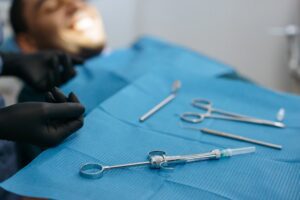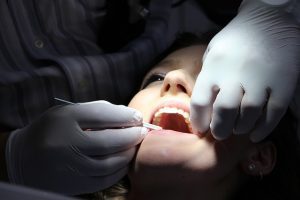So you’ve been told you’re a candidate for dental implants — the best solution for tooth loss there is. And then your maxillofacial surgeon brings up a dental bone graft. Yep, it looks like you’re going to need one. What now?
Relax. Dental bone grafts sound worse than they really are. The truth is, this is a fairly normal and common oral surgery procedure many people need before they get dental implants, whether for cosmetic or functional purposes. And thanks to modern advancements in sedation dentistry, the pain is minimal. Not to mention that now that holistic tooth replacement is a reality, dental bone grafting can be integral to the process of properly replacing your lost teeth and preserving (or even improving) the health of your jaw.
How Much Does Dental Bone Grafting Hurt?
The good news is that dental bone grafting doesn’t involve much discomfort. During the actual procedure, you’ll feel very little, aside from the initial pinch when the Novocain is applied. The recovery process does involve a little discomfort, but we can give you medication to help alleviate the pain and control the swelling. Many of our patients liken the experience to recovering from a root canal or tooth extraction. But at the end of the day, dental bone grafting is more about the healing process than the procedure itself. And since the healing your body is doing is internal, it’s not nearly as painful as people might think.
You may need to eat especially soft foods for a couple of days. Plan on a diet that includes lots of rice, yogurt, and soups as your mouth recovers from the dental bone graft.
Why is Dental Bone Grafting Necessary?
Dental bone grafting is sometimes needed when a patient does not have a sufficiently healthy jawbone to allow for the placement of dental implants. This deficiency can be the result of gum disease, injury, face development issues, or empty spaces that resulted from tooth extractions.
An oral surgeon will do a bone graft to repair the jawbone by transplanting jawbone tissue to the area you are getting the dental implant. We take healthy bone tissue to regenerate missing bone and supporting tissues. Dental bone grafting is essentially a process of creating a scaffold at the site of the bone deterioration that directs your jaw to create new, healthy bone tissue at the site of deterioration. This isn’t like knee or hip replacement, where artificial devices supplement permanent damage; this is a way to actually create new tissue that literally reconstructs the area. It’s integral to the process of holistic tooth replacement.
Who Needs Dental Bone Grafts?
If you’ve lost a tooth, you might need a dental bone graft to allow enough support to get a dental implant. This may be the case even if you get a dental implant immediately following a tooth extraction. Your tooth socket might have become infected or your tooth might not be the right size to allow for an effective replacement.
Bone loss occurs every day a tooth is missing, so the clock is ticking. The longer you go with a missing tooth, the more likely you will need a dental bone graft. And the risk isn’t just to that area – a missing tooth can cause other teeth to move, become loose or even fall out, risking other areas of your jaw as well.
What Happens to Your Jawbone When You Lose a Tooth
Your alveolar bone is the part of your jawbone that supports and holds your teeth. But the relationship of the tooth and the jaw is a two-way street. When you lose a tooth, that part of your jawbone starts to atrophy because there’s nothing to support. Like other parts of our body, jawbones strengthen when we exercise, i.e. chew food. This area of your jawbone won’t get enough exercise and will start to disappear, much like muscles atrophy when they’re unused.
What’s Involved in a Dental Bone Graft
We’ll remove a piece of bone from another part of your jaw or body and transplant it to the area of the jawbone getting the dental implant. It can take several months for the new bone to grow into the existing jawbone to create enough surface to handle the dental implant. After the bone graft heals, we can move forward with the dental implant.
What to Expect After a Dental Bone Graft
Following the dental bone graft, you’ll be given antibiotics so the area doesn’t become infected. We’ll likely give you extra strength pain medication as well, as the first few days might be a little uncomfortable. With the help of the medication and the antibiotics, you should have a fairly pain free recovery.
Then we wait for the new bone to fuse to the existing bone. Everyone’s mouth is different, so it’s hard to say how long this will be. It can take weeks or months. Some patients will heal for 3 months or even a year following a dental bone graft. Your oral surgeon will reassess you every so often to track your progress.










